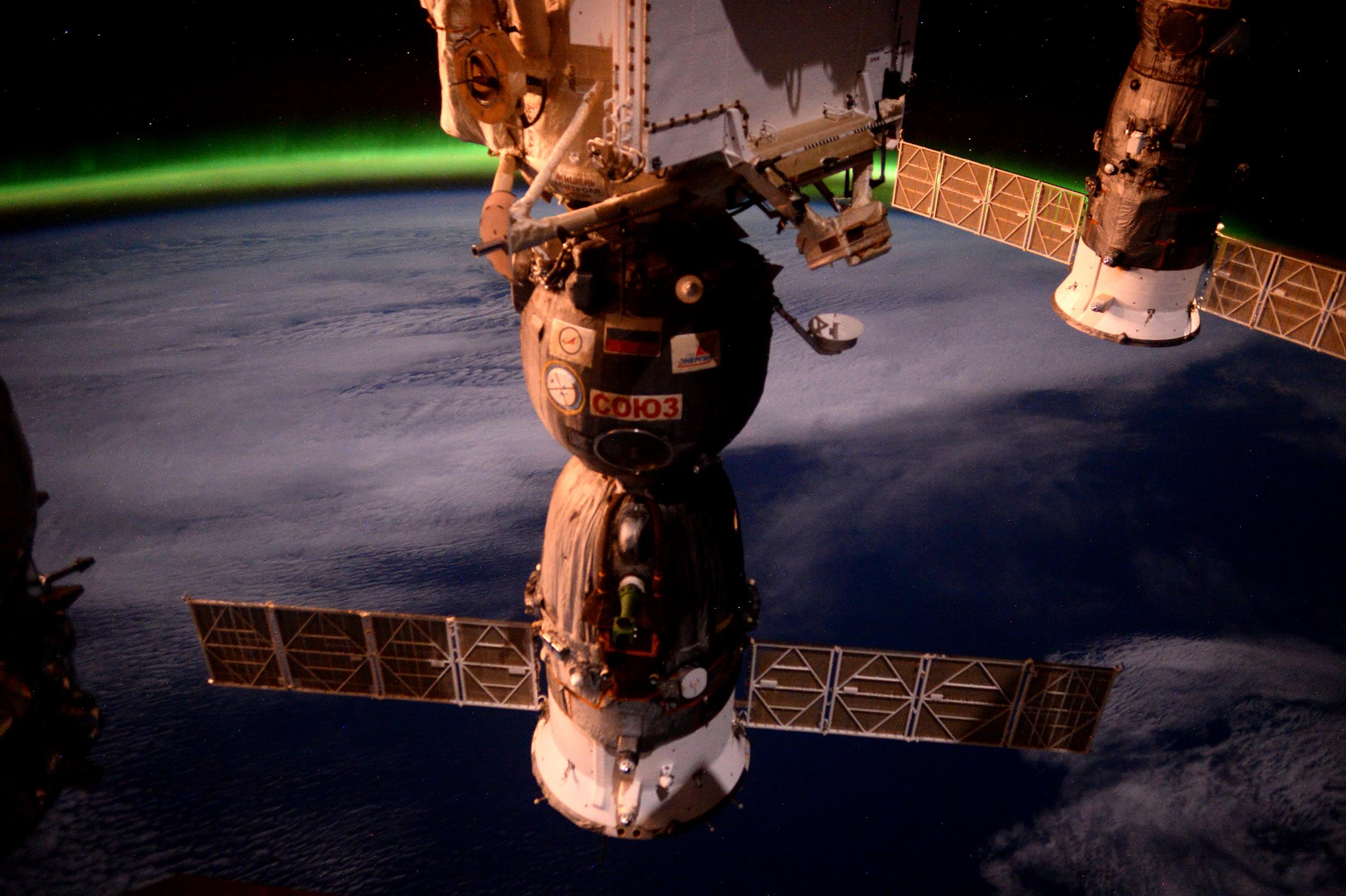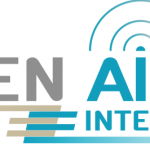What is space telecommunication? A look at the ISS case
 Laurent Franck is a space telecommunications researcher at IMT Atlantique. These communication systems are what enable us to exchange information with far-away objects (satellites, probes…). These systems also enable us to communicate with the International Space Station (ISS). This is a special and unusual case compared to the better-known example of satellite television. The researcher explains how these exchanges between Earth and outer space take place.
Laurent Franck is a space telecommunications researcher at IMT Atlantique. These communication systems are what enable us to exchange information with far-away objects (satellites, probes…). These systems also enable us to communicate with the International Space Station (ISS). This is a special and unusual case compared to the better-known example of satellite television. The researcher explains how these exchanges between Earth and outer space take place.
Since his departure in November 2016, Thomas Pesquet has continued to delight the world with his photos of our Earth as seen from the sky. It’s a beautiful way to demystify life in space and make this profession—one that fascinates both young and old—more accessible. We were therefore able to see that the members of Expedition 51 aboard the ISS are far from lost in space. On the contrary, Thomas Pesquet was able to cheer on the France national rugby union team on a television screen and communicate live with children from different French schools (most recently on February 23, in the Gard department). And you too can follow this ISS adventure live whenever you want. But how is this possible? To shed some light on this issue, we met with Laurent Franck, a researcher in space telecommunications at IMT Atlantique.
What is the ISS and what is its purpose?
Laurent Franck: The ISS is a manned international space station. It accommodates international teams from the United States, Russia, Japan, Europe and Canada. It is a scientific base that enables scientific and technological experiments to be carried out in the space environment. The ISS is situated approximately 400 kilometers above the earth’s surface. But it is not stationary in the sky, because when something is in orbit at this altitude, the laws of physics make the object rotate at a faster speed than the Earth’s rotation. It therefore follows a circular orbit around our planet at a speed of 28,000 kilometers per hour, enabling it to orbit the Earth in 93 minutes.
How can we communicate with the ISS?
LF: Not by wire, that’s for sure! We can communicate directly, meaning between a specific point on Earth and the space station. To do this, it must be visible above us. We can get around this constraint by going through an intermediary. One or several satellites that are situated at a higher elevation can then be used as relays. The radio wave goes from the Earth to the relay satellite, and then to the space station, or vice versa. It is all quite an exercise in geometry. There are approximately ten American relay satellites in orbit. They are called TDRS (Tracking and Data Relay Satellite). Europe has a similar system called EDRS (European Data Relay System).
Why are these satellites located at a higher altitude than that of the space station?
LF: Let’s take a simple analogy. I take a flashlight and shine it on the ground. I can see a ring of light on the ground. If I raise the flashlight higher off the ground, this circle gets bigger. This spot of light represents the communication coverage between the ground and the object in the air. The ISS is close to the Earth’s surface, and therefore it only covers a small part of the Earth, and this coverage is moving. Conversely, if I take a geostationary satellite at an altitude of 36,000 kilometers, the coverage is greater and corresponds to a fixed point on the Earth. Not only are few satellites required in order to cover the Earth’s surface, but the ISS can also sustainably communicate, via the geostationary satellite, with a ground station that is also located within this area of coverage. Thanks to this system, only three or four ground stations are required to permanently communicate with the ISS.
Is live communication with the ISS truly live?
LF: There is a slight time lag, for two reasons. First, there is the time the signal takes to physically travel from point A to point B. This time is related to the speed of light. Therefore, it takes 125 milliseconds to reach a geostationary satellite (television or satellite relays). We then must add the distance between the satellite and the ISS. This results in a travel time that is incompressible–since it is physical–of a little over a quarter of a second. Or half a second to travel there and back. This first time lag is easily observable when we watch the news on television: the studio asks a question and the reporter on the ground seems to wait before answering, due to the time needed to receive the question via satellite and send the reply!
Secondly, there is a processing time, since the information travels through telecommunications equipment. This equipment cannot process the information at the speed of light. Sometimes the information is stored temporarily to accommodate the processor speed. It’s like when I have to wait in line at a counter. There’s the time the employee at the counter takes to do their job, plus the wait time due to all the people in line in front of me. This time can quickly add up.
We can exchange any kind of information with the ISS. Voice and image, of course, as well as telemetry data. This is the information a spacecraft sends to the earth to communicate its state of health. Included in this information is the station’s position, the data from the experiments carried out on board, etc.
What are the main difficulties the spatial telecommunications systems experience?
LF: The major difficulty is linked to the fact that we must communicate with objects that are very far away and have limited electrical transmission power. We record these constraints in an energy link budget. This involves several phenomena. The first is that the farther away we communicate, the more energy is lost. With the distance, the energy is dispersed like a spray. The second phenomenon involved in this budget is that the quality of communication depends on the amount of energy received at the destination. We ask: out of one million bits that are transmitted, how many are false when they arrive at the destination? Finally, the last point is the output rate that is possible for the communication. This also depends on the amount of energy invested in the communication. We often adjust the output rate to obtain a certain level of quality. It all depends on the amount of energy available for transmission. This is limited aboard the ISS, since it is powered via solar panels and sometimes travels in the Earth’s shadow. The relay satellites have the same constraints.
Is there a risk of interference when the information is travelling through space?
LF: Yes and no, because radio frequency telecommunications are highly regulated. The right to transmit is linked to a maximum frequency and power. It is also regulated in space: we cannot “spill over” into another nearby antenna. For space communications, there are tables that define the maximum amount of energy that we can send outside of the main direction of communication. Below this maximum level, the energy that is sent to a nearby antenna is of course interference, but it will not prevent it from functioning properly.
What are the other applications of communications satellites?
LF: They are used for Internet access, telephony, video telephony, the Internet of things… But what is interesting is what they are not used for: GPS navigation and weather observations, for example. In fact, space missions are traditionally divided into four components: the telecommunications we are discussing here, navigation/positioning, observation, and deep-space exploration like the Voyager probes. Finally, what is fascinating is that with a field as specialized as that of space, there is an almost infinite amount of even more specialized derivations.
Motifs psychédéliques sur la côte est du golfe Persique https://t.co/N1fgfu5unC #Proxima pic.twitter.com/BMoG6YHoT3
— Thomas Pesquet (@Thom_astro) 26 février 2017





I really like this blog because it has full of information related energy, environment and telecommunication.
Perfect article thank you for posting.
Really amazing information about communication with satelites and spaces.
I just read the post you have given reference, it quite informative and easy to grab. I got clear many things from that. Thanks for this information
This post sounds great. Overall is excellent. But need to improve to explain in deep and listing the factors specifically. But still it’s awesome and knowledgeable.